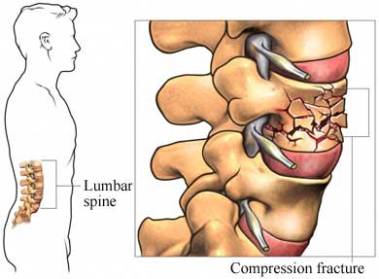To treat osteoporosis…Just to start with I think I will mention three ways which have come and gone in the last 15 years ;
Firstly hip protectors came as a sort of girdle with padding at the sides. However, it can be difficult for people to remember to put one on, or even wish to wear one; generally have gone out of fashion.
Secondly A review of available safety data for strontium ranelate (Protelos) has raised concern about its cardiovascular safety beyond the already recognised risk of venous thromboembolism. An analysis of randomised controlled trial data has identified an increased risk of serious cardiac disorders, including myocardial infarction (relative risk compared with placebo was 1.6 [95% CI 1.07–2.38]). Not prescribed by GPs anymore .
Lastly HRT is not now recommended as a first choice of therapy for long-term prevention of osteoporosis in women who are over 50 years of age because there are other medicines available that do not carry the risks associated with HRT. However HRT is still a suitable option for women who have had an early menopause.However in this case HRT should only be used for treating menopausal symptoms and preventing osteoporosis until the age of 50, after which time other medicines may be more suitable.Ok so what are the medicines we use ;
.
Bisphosphonates are a class of drugs that prevent the loss of bone mass, used to treat osteoporosis and similar diseases. They are the most commonly prescribed drugs used to treat osteoporosis. .Their non-medical use was to soften water in irrigation systems used in orange groves ! Bisphosphonates inhibit the digestion of bone by encouraging osteoclasts to undergo cell death, thereby slowing bone loss
Problems associated with administration can cause upset stomach and erosions of the oesophagus, This can be prevented by remaining seated upright for 30 to 60 minutes after taking the medication. Intravenous bisphosphonates can give fever and flu like symptoms .
Dose…70 mg weekly of Alendronic acid
Recent studies have reported bisphosphonate use (specifically zolodrenate and alendronate as a risk factor for AFib in women. The inflammatory response to bisphosphonates or fluctuations in calcium blood levels have been suggested as possible mechanisms. One study estimated that 3% of atrial fibrillation cases might have been due to alendronate usage
In large studies, women taking bisphosphonates for osteoporosis have had unusual fractures (“bisphosphonate fractures”) in the femur (thigh bone) in the shaft of the bone, rather than at the head of the bone, which is the most common site of fracture. However, these unusual fractures are extremely rare (12 in 14,195 women) compared to the common hip fractures (272 in 14,195 women), and the overall reduction in hip fractures caused by bisphosphonate far outweighed the unusual shaft fractures. There are concerns that long-term bisphosphonate use can result in over-suppression of bone turnover. It is hypothesized that micro-cracks in the bone are unable to heal and eventually unite and propagate, resulting in these “atypical fractures “
- First-line bisphosphonate (usually alendronate on the basis of cost) is only recommended in postmenopausal women aged under 65 with confirmed osteoporosis but without fragility fractures, if they have an independent clinical risk factor for fracture ie parental history of hip fracture, alcohol intake of 4 or more units per day, and rheumatoid arthritis and at least one additional indicator of low BMD. ie low body mass index (defined as less than 22 kg/m2), medical conditions such as ankylosing spondylitis, Crohn’s disease, conditions that result in prolonged immobilitys,
- Start bisphosphonates in osteoporotic women without fragility fracture once they reach age 65 if they have any independent clinical risk factor for fracture, or over the age of 70 if they just have an indicator of low BMD.
Now after their fragility fracture…when you see them in the community hospital;
Alendronate is recommended as a treatment option for the secondary prevention of osteoporotic fragility fractures in postmenopausal women who are confirmed to have osteoporosis (that is, a T-score of-2.5 SD or below) below 75. In women aged 75 years or older, a DXA scan may not be required if the responsible clinician considers it to be clinically inappropriate or unfeasible.Normally they are just put on a biphosphonate by the orthopaedic team
Before starting however check the egfr as biphophonates are contraindictaed with egfr below 35 and also do u/e s fbc, calcium, lfts
consider BJPs immunoglobulins make sure youre not missing a significant pathological cause.
Calcium and vit d , the tasty chalk is always co prescribed and recommended
Calcium is usually easily tolerated when it is taken in divided doses several times per day. Some people experience side effects related to calcium, including constipation and indigestion. Calcium supplements interfere with the absorption of iron and thyroid hormones thus these medications should be taken at different times Use of calcium supplements may also increase the risk of kidney stones in susceptible individuals by raising the level of calcium in the urine.
Denosumab is a monoclonal antibody that reduces osteoclast activity (and hence bone breakdown) which is given by 6-monthly subcutaneous injections. It may be a suitable option in those who are unable to comply with instructions for alendronate or those with intolerance to oral bisphosphonates
